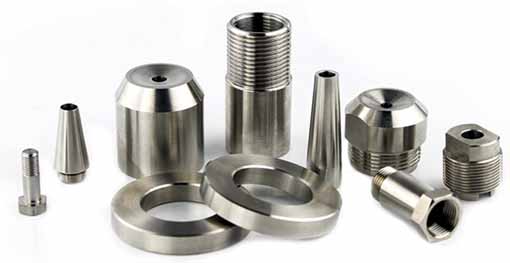Cylindrical parts with milling features on compound corners or multiple faces are very common. A factory that provides services for large-scale equipment and oil companies, and produces parts that require precise 5-axis contour machining and finishing. B-axis machine tools are usually used to manufacture slotted shafts, and to machine grooves and cuts on compound angles. Such factories also use B-axis machine tools to process complex polyhedrons, such as tool bodies and tool holders.
The size of the parts processed by the B-axis machine tool is various. It can process watch gears as small as 0.04 inches in diameter, or metal castings as large as 20 inches in diameter.
In order to meet the different machining needs of customers, Methods Machine Tool Company provides two models of Nakamura Tome machines equipped with B-axis. The STW-40 machine tool with a standard 40-station automatic tool changer is designed to process large and heavy parts. Such as: castings and forgings, and can process workpieces up to 17 inches in diameter. However, in response to customer needs, Methods Machine Tool Company can now provide a smaller model of B-axis machine tools, namely NTJ (B-axis turret). The weight of this machine is only about half of the STW-40. The advantage is that it occupies a small area and is easy to maintain and operate compared to large-sized machine tools. NTJ is most suitable for machining smaller B-axis parts, such as joint tools up to 8 inches in diameter.
Both of these models are equipped with a bar feed function, so it is possible to feed raw materials to the machine tool in a continuous flow method, and then perform B-axis cutting. If necessary, this processing can also be performed on part features equipped with compound angles. When evaluating parts and bar feed options, the factory should consider the size of the raw material. Although a large B-axis machine tool equipped with a bar feed function can handle larger bars, it is impractical to always load such specifications into the machine tool. Because bars are generally relatively long (up to 12 feet is not uncommon), human or robot lifting may be too heavy. Large materials are also difficult to cut, especially in cutting bars.

Compound machining of cylindrical parts
 English
English العربية
العربية 中文(漢字)
中文(漢字) Čeština
Čeština Dansk
Dansk Nederlands
Nederlands Suomi
Suomi Français
Français Deutsch
Deutsch Italiano
Italiano 日本語
日本語 ಕನ್ನಡ
ಕನ್ನಡ 한국어
한국어 Português
Português Русский
Русский Slovenčina
Slovenčina Español
Español Svenska
Svenska Türkçe
Türkçe

